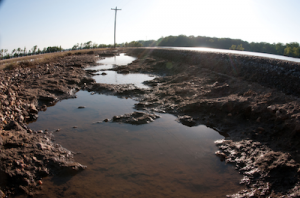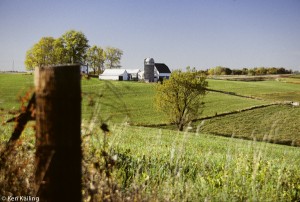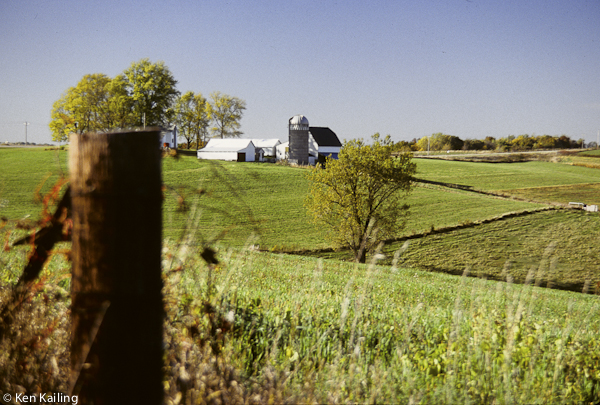Have you noticed how conflicting news reports about water have been lately? From too little – resulting in wildfires destroying 3,700 acres in Siberia – to too much – flooding in Mississippi River Valley towns from Illinois to Louisiana – we are getting mixed messages.
Reports that we have reached “peak water,” and predictions that climate change is likely to diminish already scarce water supplies in the Western US, contrasted with reports saying that climate is actually getting warmer and wetter – at least in parts of the country. Massive storms and tornadoes and flooding in the Midwest may be caused by higher “sea surface” temperatures.
Everybody wants it, we all need it, but no one seems to agree either on the relative availability of water into the future or how to manage it. One thing for sure, our food security depends on it.
Water surrounds us – and is in us. Think of the vegetables and fruit you eat or even a simple pork chop. An apple consists of 86% water and a pork chop, 60% water. We humans are about 75% water.
But that’s not all. Current industrial agriculture expends 18 gallons of water to produce a single apple, and a whopping 576 gallons of water to raise 1 pound of pork. And that doesn’t include the water used in processing. Clearly, water is a valuable – and necessary – resource.
Why then, do we disagree about what is happening with our water and how to insure that we have enough of it, of good quality, in the right place, at the right time, to support our food system? Those are big questions taking into account the economy of our value system, its history, and the affect our economy has had in the way we’ve managed our natural resources overall.
There is little question that present water resource management practices are sustainable; they’re not! To control the Mississippi River, dozens of dams were built on the upper Mississippi (above St. Louis) and thousands of miles of levees were constructed on the lower half of the river.

Current flooding on the Mississippi has caused the Army Corps to breach levees to protect communities built in the floodplain, inundating hundreds of thousands of acres of farmland and spreading pesticides and other pollutants washed from upland fields, suburbs and industrial sites throughout the watershed. The Corps has authority to control the river but no jurisdiction beyond the area connected to the navigation channel.(1)
The real remedy lies in a return to conservation land use planning and practices in the uplands, something the industrial agricultural complex is dead set against. Earlier this week, the House Agriculture Appropriations Subcommittee adopted a government funding bill that, if passed, would cut conservation funding by some $1 billion and scuttle the existing Conservation Stewardship Program.
Tom Philpott, Grist, summed up the situation well when he said:
Upland prairies of the Midwest contained the earth’s greatest store of prime agricultural soils. Over half of this resource has already been depleted. Erosion was arrested for a time as a result of the soil conservation practices implemented during the New Deal years.
Unfortunately, a drastic turn to intensified, industrial agriculture to “feed the world” occurred in 1974 when Secretary of Agriculture, Earl Butz, inspired by big business, reengineered many farm support programs and urged farmers to plant commodity crops like corn “from fencerow to fencerow.”
As a result of the continuing dominance of corporations in the US business of agriculture and their reliance on high technology solutions to maximize grain yields, soil loss in states like Iowa now matches Dust Bowl losses in some places.
Land is treated like something to be used up, leveled for efficiency, salted with artificial nutrients and inoculated with “bug” and “weed” killers. Former traditional farmsteads with their stable assemblages of livestock, crops, orchards, woodlots and wetlands are consolidated into monotypic plant and animal factories.
Now runoff from these barren industrialized landscapes not only carries away the fertile soil necessary to grow crops, but also transports fertilizers and pesticides into water systems downstream. Further, water necessary to replenish natural reservoirs and revitalize habitat, including wetlands, is lost.
So, what economic and social forces are operating to expend our natural resources including water so irresponsibly? Development should not occur in floodplains or on erodible uplands, or on fertile soils. But industrial agriculture is as much or more responsible for the waste of water and flood damage.
And our government no longer serves the public interest. For example, according to the Environmental Working Group (EWG) report, Losing Ground, “underfunded conservation programs are failing to blunt the damage caused by federal policies that push farmers to plant crops fencerow to fencerow. Between 1997 and 2009, the government paid Iowa farmers $2.76 billion to put conservation practices in place. In the same time period, it paid out six times as much, $16.8 billion, in income, production and insurance subsidies that encouraged maximum-intensity planting, not conservation.”

Some may pretend otherwise, but smart people know we can’t produce good food without fertile soils and water. Responsible agrarians know we need to keep both in the correct amount, in the right place sustainability. That’s what our conservation programs are meant to do and why we need to support them. Given the forecast for climate change, conservation at all levels may be the only way we survive.
Aldo Leopold, considered by many to be the father of conservation, was a pioneer in helping implement the pilot soil and water conservation program in the Upper Mississippi River Watershed; a program that put a Civilian Conservation Corps (CCC) in partnership with local farmers on private land to “do work as was necessary in the public interest to control floods.” Many of CCC projects provide vital erosion control functions to this day.
Leopold also wrote The Land Ethic, in 1949, where he said, “When the logic of history hungers for bread and we hand out a stone, we are at pains to explain how much the stone resembles bread.”
That is something every legislator and corporate sponsored academic should think about. Leopold is not only a reminder of how we have lost the integrity of our land, water, natural ecosystems and rural democracy, therefore our “bread,” but he also tells us what we can do to recover that integrity through a land ethic that keeps all of our natural heritage in place; an ecologically sound and sustainable conservation practice. This restored water and land conservation practice is a necessary first step in the revitalization of our food system.
Resources:
(1)An insightful history of floodplain management in the US and remedy is outlined in Floodplain Management: A New Approach for a New Era by B. Freitag, et.al.

